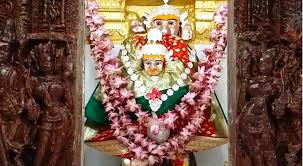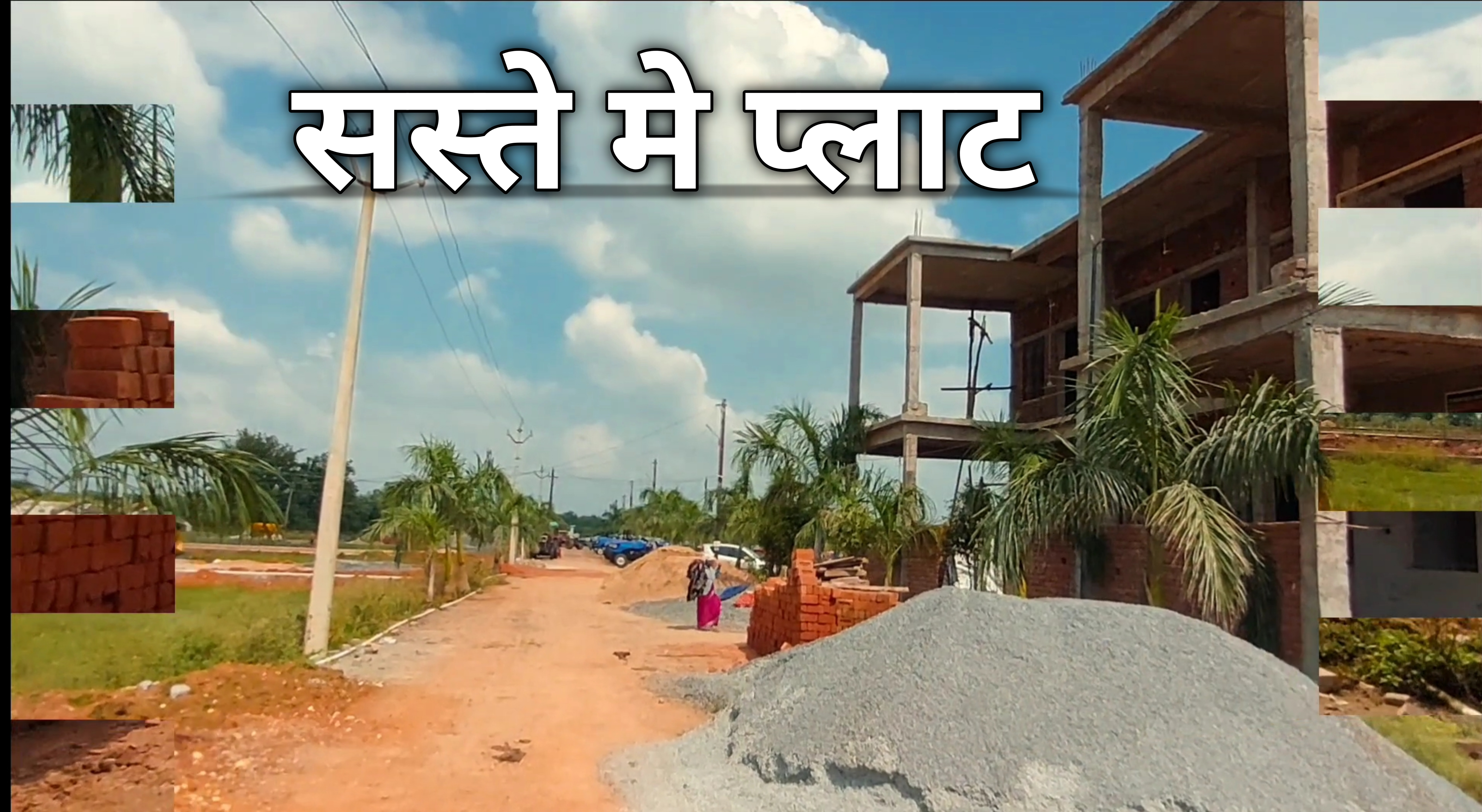
Mahamaya Mandir Ratanpur
Introduction Mahamaya Mandir Ratanpur Bilaspur
The Mahamaya Mandir ratanpur , located in the historic town of Ratanpur, Chhattisgarh, is not only one of the most revered temples in the state but also a testament to India’s ancient cultural and religious heritage. Dedicated to Goddess Mahamaya, the temple draws pilgrims and tourists alike who come to seek blessings and explore its architectural beauty and spiritual aura.
Table of Contents:
- Historical Significance of Ratanpur
- Ancient Roots of Ratanpur
- The Role of the Kalachuri Dynasty
- How Ratanpur Became a Spiritual Hub
- Origins of Mahamaya Mandir
- The Story Behind Goddess Mahamaya
- Myths and Legends Associated with the Temple
- The Historical Timeline of Temple Construction
- Architectural Marvel of Mahamaya Mandir
- The Blend of South Indian and Nagara Styles
- Key Features: Pillars, Sculptures, and Shikharas
- Renovations and Restorations Over Time
- Spiritual Importance of Mahamaya Mandir
- Religious Significance of Goddess Mahamaya
- Festivals and Rituals Celebrated at the Temple
- Experiences of Devotees and Visitors
- Cultural Impact of Mahamaya Mandir
- The Role of the Temple in Local Life
- Mahamaya Mandir in Literature and Arts
- How the Temple Continues to Influence Ratanpur’s Identity
- How to Reach Mahamaya Mandir
- Accessibility by Road, Rail, and Air
- Travel Tips for Visitors
- Best Time to Visit and Accommodation Options
- Events and Festivals at Mahamaya Mandir
- Navaratri: A Grand Celebration
- Special Puja and Annual Rituals
- Community Engagement and Celebrations
- Tourist Attractions Near Mahamaya Mandir
- Exploring Ratanpur: Other Temples and Forts
- Nearby Places of Interest: Bilaspur, Malhar, and Tala
- Pilgrimage and Adventure Tourism Around the Temple
- Historical and Archaeological Significance of the Region
- Discovering the Heritage of Ratanpur and Beyond
- The Influence of Kalachuri Architecture on the Temple
- Excavations and Findings: What Lies Beneath
- Modern-Day Relevance of Mahamaya Mandir
- Conservation Efforts by the Government and NGOs
- The Role of Mahamaya Mandir in Chhattisgarh’s Tourism Industry
- Plans for the Future: Digital and Cultural Preservation
1. Historical Significance of Ratanpur
Ancient Roots of Ratanpur
Ratanpur, once the capital of the Kalachuri dynasty, has a history that stretches back over a millennium. It was known as an important political and religious center during the medieval period. The city, located about 25 km from Bilaspur, was originally established in the 11th century. It flourished as a trade hub, particularly during the reign of the Kalachuri rulers who left a lasting imprint on its architecture and culture.
The Role of the Kalachuri Dynasty
The Kalachuris were a prominent dynasty that ruled central India, and their impact on Ratanpur was profound. Their rule marked the development of many temples and forts, and they were strong patrons of art and religion. The establishment of Mahamaya Mandir was one of their key contributions to the religious landscape of the region. It is believed that King Ratnadev I constructed the temple in the 12th century.
How Ratanpur Became a Spiritual Hub
Over the centuries, Ratanpur became not just a center of politics but also of spirituality. Many important temples were built during this time, solidifying its place as a major religious destination. The Mahamaya Mandir stood at the heart of this spiritual movement, attracting devotees from across the region.
2. Origins of Mahamaya Mandir
The Story Behind Goddess Mahamaya
Goddess Mahamaya is considered a powerful form of Shakti, the divine feminine energy. According to local legends, she is an incarnation of Goddess Durga who protects the land from evil forces. The name “Mahamaya” itself signifies “great illusion,” emphasizing her role in preserving cosmic balance. It is said that the temple was established after the goddess appeared in King Ratnadev’s dream and instructed him to build a temple in her honor.
Myths and Legends Associated with the Temple
The temple is steeped in folklore. One popular belief is that Mahamaya was the guardian of Ratanpur’s prosperity. Another legend suggests that the goddess, appearing in the form of a lioness, protected the people of the region from invading forces. The temple is also associated with miraculous events, including stories of healing and blessings bestowed upon devotees.
The Historical Timeline of Temple Construction
The construction of Mahamaya Mandir can be traced back to the 12th century. It underwent several renovations and expansions during the reign of various Kalachuri kings. The temple structure as it stands today is a result of multiple architectural influences, preserving the original design while incorporating elements from later periods.
3. Architectural Marvel of Mahamaya Mandir
The Blend of South Indian and Nagara Styles
One of the most fascinating aspects of Mahamaya Mandir is its architectural design, which blends South Indian Dravidian elements with Nagara (North Indian) style. This unique combination makes it an architectural gem. The temple’s tall shikharas (spires) and intricately carved pillars are reminiscent of traditional Indian temple designs, yet the temple complex has an air of distinction that sets it apart from others.
Key Features: Pillars, Sculptures, and Shikharas
The temple is adorned with finely sculpted images of gods, goddesses, and mythical creatures. The carvings on the pillars depict stories from Hindu mythology, especially scenes from the Ramayana and Mahabharata. The shikharas rise gracefully above the sanctum, crowned with a kalasha (auspicious pot) symbolizing prosperity and fertility.
Renovations and Restorations Over Time
Over the centuries, the temple has been renovated several times, particularly in the 19th and 20th centuries. These efforts were made to preserve the temple’s structure from the ravages of time. Conservation work continues today, with both the government and private organizations contributing to maintaining its grandeur.
4. Spiritual Importance of Mahamaya Mandir
Religious Significance of Goddess Mahamaya
Goddess Mahamaya is worshipped as a powerful deity who grants protection, prosperity, and fulfillment of desires. Devotees come to the temple seeking her blessings, especially during times of personal and family crises. The temple is particularly significant for devotees of Shaktism, a sect of Hinduism that emphasizes the worship of the divine feminine.
Festivals and Rituals Celebrated at the Temple
Mahamaya Mandir is at its most vibrant during festivals, especially Navaratri, when thousands of devotees flock to the temple for nine days of worship and celebrations. The temple’s priests perform special pujas and rituals during this time, invoking the goddess’s blessings for peace and prosperity. Other important festivals include Diwali, Dussehra, and Makar Sankranti.
Experiences of Devotees and Visitors
Many devotees have shared stories of miraculous experiences and spiritual transformations after visiting the temple. Whether it’s the serene ambiance or the powerful energy of the goddess, the temple continues to be a place where people seek solace and divine intervention in their lives.
5. Cultural Impact of Mahamaya Mandir
The Role of the Temple in Local Life
The Mahamaya Mandir plays a central role in the cultural and religious life of Ratanpur. It is not just a place of worship but a focal point for social gatherings and festivals. The temple provides a sense of identity to the local community, serving as a symbol of their rich heritage and traditions.
Mahamaya Mandir in Literature and Arts
Over the years, the temple has inspired poets, writers, and artists. Its legends and history have been immortalized in local folklore and songs. The temple’s grandeur has also been depicted in numerous paintings and sculptures, showcasing its importance in Chhattisgarh’s cultural tapestry.
How the Temple Continues to Influence Ratanpur’s Identity
For the people of Ratanpur, Mahamaya Mandir is more than just a religious site; it is a cornerstone of their cultural identity. The temple has been instrumental in preserving local traditions, and it continues to be a place where ancient rituals and customs are practiced with great fervor.
To develop the rest of the article, I would include more in-depth exploration into each of the remaining sections, with careful attention to historical records, current religious practices, and visitor experiences to make the content both engaging and informative. Would you like me to proceed with more details on specific sections or help with structuring content further?
6. How to Reach Mahamaya Mandir
Mahamaya Mandir is well-connected to major cities in Chhattisgarh and India, making it accessible for both domestic and international visitors. Here’s a comprehensive guide on how to reach the temple:
Accessibility by Road, Rail, and Air
- By Road: Ratanpur is about 25 kilometers from Bilaspur, a key city in Chhattisgarh. Bilaspur is well-connected by road to other major cities such as Raipur, Durg, and Raigarh. There are frequent buses and taxis available from Bilaspur to Ratanpur, making it easy for visitors to travel. The road journey from Bilaspur to Ratanpur takes about 45 minutes.
- By Rail: Bilaspur Junction is one of the busiest railway stations in India and is part of the South East Central Railway zone. Trains from all over the country, including major cities like Delhi, Mumbai, Kolkata, and Chennai, pass through Bilaspur. Once you reach Bilaspur, you can easily take a bus or hire a taxi to reach Mahamaya Mandir.
- By Air: The nearest airport is Swami Vivekananda Airport in Raipur, which is about 125 kilometers from Ratanpur. The airport is well-connected to major cities like Delhi, Mumbai, and Bangalore. From Raipur, you can either hire a taxi or take a bus to Ratanpur. The journey from Raipur to Ratanpur by road takes around 3 to 4 hours.
Travel Tips for Visitors
- Best Time to Visit: While the temple is open year-round, the best time to visit is during the winter months (October to February) when the weather is pleasant. Navaratri, usually in September or October, is the most auspicious time to visit as the temple celebrates the festival with great fervor.
- Footwear Policy: As with most temples in India, visitors are required to remove their footwear before entering the temple premises. It’s advisable to carry a bag to store your shoes or leave them at designated counters.
- Dress Code: Though there is no strict dress code, it is recommended to wear modest clothing, especially while participating in rituals or during festivals.
- Prasad: Don’t miss the opportunity to take “prasad” (a blessed offering) home. The temple offers various types of prasad, and devotees can also make offerings of sweets, fruits, and flowers.
Best Time to Visit and Accommodation Options
- Best Time to Visit: The most popular time to visit Mahamaya Mandir is during Navaratri when the temple is beautifully decorated, and special rituals are performed. If you want to avoid the crowd but still experience the temple’s spiritual aura, consider visiting in the early morning hours or during weekdays.
- Accommodation: Visitors to Mahamaya Mandir can find several accommodation options in both Ratanpur and Bilaspur. In Ratanpur, there are budget hotels, dharamshalas (pilgrim rest houses), and guesthouses near the temple complex. Bilaspur, being a larger city, offers a wider range of hotels, from budget to mid-range options. Some popular hotels in Bilaspur include Hotel East Park, Courtyard by Marriott, and Hotel Intercity International.
7. Events and Festivals at Mahamaya Mandir
Navaratri: A Grand Celebration
Navaratri is the most important festival celebrated at Mahamaya Mandir, and it draws thousands of devotees from all over India. The nine-day festival is dedicated to Goddess Durga and her various incarnations, including Mahamaya. During this time, the temple is adorned with lights, flowers, and decorative hangings, creating a vibrant atmosphere of devotion and celebration.
- Rituals and Offerings: Each day of Navaratri is marked by special rituals and offerings to the goddess. Devotees offer flowers, sweets, and coconut to the deity, and the priests perform aarti (a devotional light ceremony) multiple times a day. The chanting of hymns and the rhythmic beats of drums and bells fill the air, enhancing the spiritual ambiance.
- The Procession: On the final day of Navaratri, also known as Vijayadashami or Dussehra, a grand procession takes place. The idol of Goddess Mahamaya is carried on a chariot through the streets of Ratanpur, accompanied by devotees singing bhajans (devotional songs) and dancing in joy. This procession is one of the highlights of the festival and attracts large crowds.
Special Puja and Annual Rituals
Apart from Navaratri, the temple also conducts various special pujas (prayer ceremonies) throughout the year. These rituals are performed on auspicious occasions such as Diwali, Makar Sankranti, and Durga Ashtami. The temple also organizes annual rituals to mark important Hindu festivals, including the recitation of the “Durga Saptashati,” a scripture dedicated to the goddess.
- Community Participation: The local community plays an active role in organizing and participating in these rituals. Devotees often take part in the “yagnas” (fire offerings) and distribute food and clothing to the needy during special occasions.
Community Engagement and Celebrations
Mahamaya Mandir is not just a place of worship but also a center of community life in Ratanpur. The temple often hosts cultural programs, religious discourses, and charity events. During festivals, local artisans and performers showcase their talents through traditional music, dance, and theater, contributing to the rich cultural fabric of the region.
- Bhandara (Mass Feeding): On major festivals and auspicious days, the temple organizes “bhandaras” (mass feedings), where free meals are served to thousands of devotees and the poor. This act of generosity and service is an integral part of the temple’s community outreach.
8. Tourist Attractions Near Mahamaya Mandir
In addition to the Mahamaya Mandir, the town of Ratanpur and its surroundings offer several historical and cultural attractions worth exploring. Here are some notable sites:
Exploring Ratanpur: Other Temples and Forts
- Ratanpur Fort: Located near Mahamaya Mandir, Ratanpur Fort is a historic structure that dates back to the Kalachuri dynasty. Though much of the fort is in ruins today, it offers a glimpse into the grandeur of Ratanpur’s past. The fort is surrounded by scenic landscapes, and visitors can explore its ancient gates, walls, and remnants of old palaces.
- Other Temples: Ratanpur is home to several other temples, including the Bhadrakali Temple, which is dedicated to another form of Goddess Durga, and the Sita Mai Temple, which is believed to be associated with the Ramayana. These temples are often visited by devotees who come to offer their prayers and seek blessings.
Nearby Places of Interest: Bilaspur, Malhar, and Tala
- Bilaspur: Bilaspur, the nearest major city, is known for its cultural heritage and vibrant markets. While in Bilaspur, visitors can explore the Achanakmar Wildlife Sanctuary, enjoy boating at Khutaghat Dam, or visit the historical sites of Malhar, known for its ancient temples and Buddhist ruins.
- Malhar: Located about 40 km from Bilaspur, Malhar is an archaeological site of great significance. It is known for its ancient temples dating back to the 9th and 10th centuries. The ruins of the Pataleshwar Temple and the Didneshwari Temple provide insights into early Hindu temple architecture.
- Tala: Tala, another important archaeological site, is famous for its ancient Jain temples and sculptures. It is an ideal destination for history enthusiasts and those interested in ancient art and architecture.
Pilgrimage and Adventure Tourism Around the Temple
For those looking to combine spirituality with adventure, the region around Ratanpur offers opportunities for trekking and nature walks. The scenic beauty of the region, with its hills and forests, makes it an ideal destination for nature lovers. Pilgrims often visit nearby waterfalls and natural caves that hold religious significance.
9. Historical and Archaeological Significance of the Region
The Mahamaya Mandir and the surrounding region of Ratanpur are not only of religious importance but also hold immense historical and archaeological value. Excavations in the area have unearthed artifacts and structures that provide valuable insights into the ancient history of Chhattisgarh.
Discovering the Heritage of Ratanpur and Beyond
Archaeological studies suggest that Ratanpur was a thriving center of culture and religion during the Kalachuri period. The discovery of ancient coins, inscriptions, and sculptures in and around Ratanpur indicates that the region was a hub of trade, art, and spirituality.
- Kalachuri Influence: The Kalachuri kings were patrons of architecture and built numerous temples and monuments in the region. Their influence is evident in the design of Mahamaya Mandir and other temples in the area.
The Influence of Kalachuri Architecture on the Temple
The architectural style of Mahamaya Mandir reflects the Kalachuri dynasty’s distinct design elements. The use of intricate carvings, pillared halls, and towering shikharas is characteristic of Kalachuri architecture. The temple’s structural design, including its sanctum sanctorum (garbhagriha), bears similarities to other Kalachuri-era temples in central India.
Excavations and Findings: What Lies Beneath
Recent archaeological excavations near Ratanpur have uncovered significant artifacts that offer a glimpse into the region’s ancient history and the cultural exchanges that took place during the Kalachuri period. Some of these findings include terracotta figurines, coins, pottery, and inscriptions that date back to the 9th and 12th centuries. These artifacts provide important insights into the religious and social practices of the time, and they indicate that Ratanpur was a major center for both Hindu and Buddhist worship.
Inscriptions and Temple Records
Several stone inscriptions found in and around Mahamaya Mandir detail the contributions of the Kalachuri kings to the temple’s construction and renovation. These inscriptions, written in Sanskrit and Prakrit, record donations made by the kings, as well as rituals and festivals celebrated during their reign. Such records are crucial for historians, as they provide a timeline of the temple’s development and the important role it played in the spiritual life of the region.
- Iconography: The temple is adorned with detailed carvings that depict various deities and scenes from Hindu mythology. The presence of both Shaiva and Vaishnava symbols in the temple’s design suggests that it was a center of worship for multiple sects, further indicating the cultural diversity of Ratanpur during its heyday.
- Temple Artifacts: Some of the most valuable discoveries made in the region include temple relics, such as bronze and stone sculptures of gods and goddesses. These artifacts are now preserved in local museums, helping to educate visitors about the rich history of the region.
10. Modern-Day Relevance of Mahamaya Mandir
In the present day, Mahamaya Mandir continues to be a key religious and cultural landmark in Chhattisgarh. It not only serves as a place of spiritual solace but also plays a significant role in the region’s tourism and cultural identity.
Conservation Efforts by the Government and NGOs
Recognizing the temple’s historical and cultural importance, both the government and various NGOs have taken steps to preserve and restore Mahamaya Mandir. These efforts focus on maintaining the structural integrity of the temple, protecting its carvings, and improving the visitor experience. The Archaeological Survey of India (ASI) has been actively involved in the restoration work, ensuring that the temple’s original design is preserved while addressing the wear and tear caused by time and weather.
- Digital Documentation: In recent years, initiatives have been taken to digitally document the temple’s architecture, inscriptions, and artifacts. This not only helps in preserving the temple’s legacy for future generations but also makes the information accessible to a wider audience through digital platforms.
- Environmental Conservation: The area surrounding the temple is also subject to conservation efforts. Local organizations are working to maintain the natural beauty of the region, ensuring that the temple’s surroundings remain serene and unspoiled. This includes efforts to reduce pollution, manage waste from visitors, and preserve the local flora and fauna.
The Role of Mahamaya Mandir in Chhattisgarh’s Tourism Industry
As one of the most prominent religious sites in Chhattisgarh, Mahamaya Mandir plays a key role in promoting tourism in the state. The temple attracts a large number of pilgrims, especially during festivals like Navaratri, and has become a must-visit destination for anyone exploring Chhattisgarh’s cultural and historical heritage.
- Boost to Local Economy: The influx of visitors has had a positive impact on the local economy. Small businesses, including local artisans, vendors, and accommodation providers, thrive during the tourist season. The sale of handicrafts, religious souvenirs, and local delicacies has become an integral part of the visitor experience at Ratanpur.
- Tourism Campaigns: The state government has actively promoted Mahamaya Mandir as part of its tourism campaigns, highlighting its religious significance and historical value. Initiatives like Chhattisgarh Tourism’s “Heritage Circuit” encourage travelers to explore the state’s cultural landmarks, including the Mahamaya Mandir, in combination with other important sites such as Sirpur and Barnawapara Wildlife Sanctuary.
Plans for the Future: Digital and Cultural Preservation
Looking ahead, there are several plans in place to further preserve and promote Mahamaya Mandir. The temple is set to benefit from more extensive digital preservation efforts, including virtual tours and online archives of historical records and artifacts.
- Virtual Tours: In response to the increasing interest in cultural tourism, virtual tours of the temple are being developed, allowing people from all over the world to explore Mahamaya Mandir’s architecture, rituals, and history from the comfort of their homes. This initiative is particularly valuable in preserving the temple’s legacy for younger generations and people who may not be able to visit the site in person.
- Cultural Festivals and Tourism Development: In addition to ongoing restoration efforts, plans are in place to enhance the experience of tourists and pilgrims visiting the temple. This includes improving infrastructure around the temple, creating educational centers where visitors can learn about the history of Ratanpur, and organizing cultural festivals that celebrate the region’s diverse heritage.
Conclusion: Mahamaya Mandir—A Living Testament to India’s Spiritual and Cultural Heritage
Mahamaya Mandir is not just a place of worship but a living testament to India’s rich spiritual, architectural, and cultural heritage. For centuries, it has stood as a beacon of faith, attracting devotees from near and far. Its historical significance, architectural beauty, and spiritual aura make it one of the most important temples in Chhattisgarh and a key destination for both pilgrims and tourists.
Whether you’re drawn by its historical legacy, spiritual significance, or simply the beauty of its surroundings, Mahamaya Mandir offers a unique experience that transcends time. The temple continues to thrive in modern times, thanks to ongoing conservation efforts and the dedication of its devotees, ensuring that it remains a vibrant center of faith and culture for generations to come.








